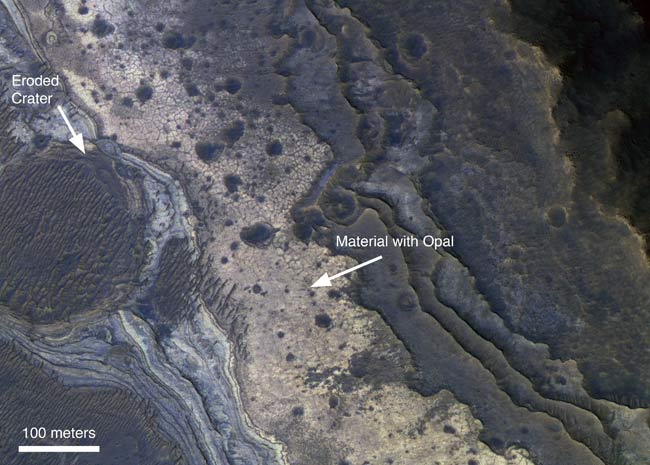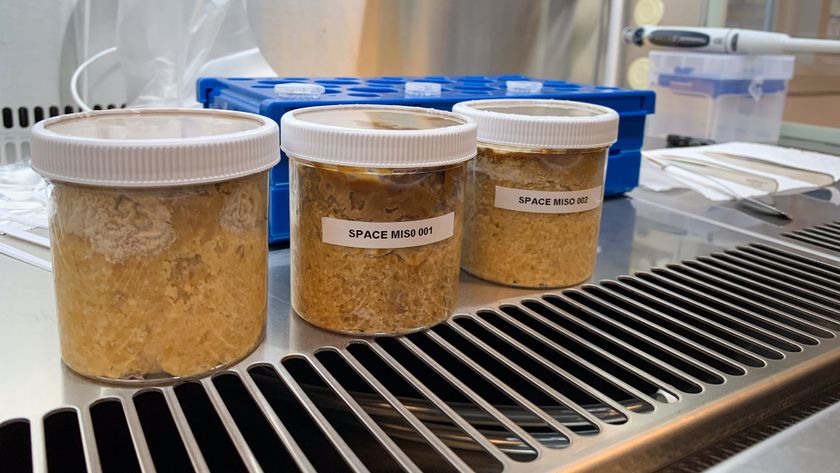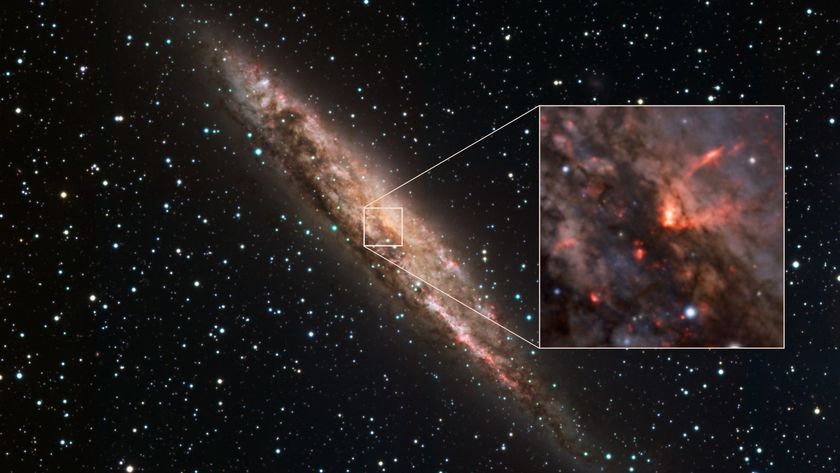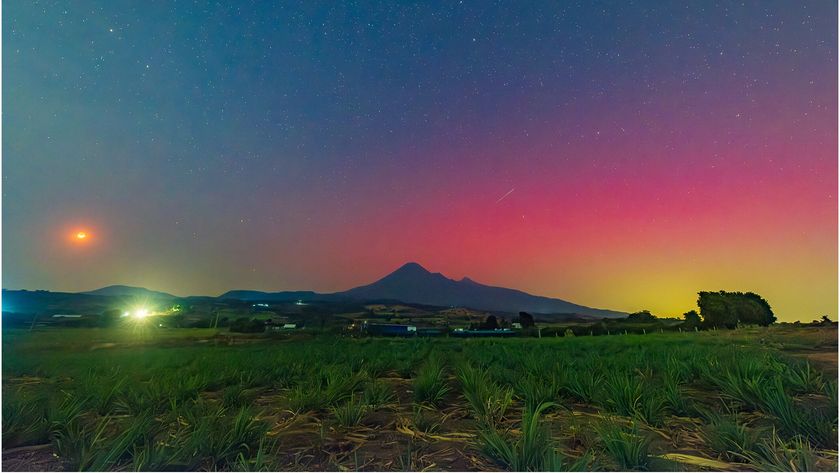New Signs That Ancient Mars Was Wet

Mars mayhave been wet for a billion years longer than previously thought, new water-relatedopal evidence from NASA's Mars Reconnaissance Orbiter suggests. The findingshave implications for the possibility that Mars once supported life.
Scientistshave known for some time that the 4.5 billion-year-old planet once harboredliquid water because of the many features on its surface that were likelycreated by flowing water.
Hydrated,or water-containing, mineral deposits also provide telltale signs of where andwhen waterwas present on ancient Mars.
Until now,only two major groups of hydrated minerals, phyllosilicates and hydratedsulfates, have been observed by spacecraft orbiting the red planet. (The clay-likephyllosilicates formed more than 3.5 billion years ago where igneous rockencountered water. Hydrated sulfates formed until about 3 billion years agofrom the evaporation of salty and sometimes acidic water.)
But a newhydrate mineral has now entered the picture: hydrated silica, commonly known asopal.
Theseopaline silicates were detected by MRO's Compact Reconnaissance ImagingSpectrometer for Mars (CRISM) and are the youngest of the three types ofhydrated minerals. They formed where liquid water altered materials created byvolcanic activity or meteorite impacts on the Martian surface.
"Thisis an exciting discovery because it extends the time range for liquid water onMars, and the places where it might have supported life," said CRISMprincipal investigator Scott Murchie of the Johns Hopkins Applied PhysicsLaboratory in Laurel, Md. "The identification of opaline silica tells usthat water may have existed as recently as 2 billion years ago."
Get the Space.com Newsletter
Breaking space news, the latest updates on rocket launches, skywatching events and more!
Some of theopaline deposits were also associated with iron sulfates, which study teammember Ralph Milliken of NASA's Jet Propulsion Laboratory in Pasadena, Calif., said is "the exact sort of minerals you would expect to see if you had reallyacidic water."
And notonly do the deposits indicate the past presence of liquid water, but that thewater "was there long enough to alter some of the rocks," Millikentold SPACE.com. "It wasn't an overnight process."
Oneparticular location where the opaline silicates were found was the large canyonsystem Valles Marineris.
"Wesee numerous outcrops of opal-like minerals, commonly in thin layers extendingfor very long distances around the rim of Valles Marineris and sometimes withinthe canyon system itself," Milliken said.
Theminerals were also recently found in Gusev Crater by NASA's Mars rover Spirit.
Another recentstudy, which Milliken co-authored, looked at images of the same depositstaken by MRO's HiRISE camera.
The newstudy, detailed in the November issue of the journal Geology, revealsthat opaline silicates are widespread and occur in relatively young terrain.
"What'simportant is that the longer liquid water existed on Mars, the longer thewindow during which Mars may have supported life," Milliken said. "Theopaline silica deposits would be good places to explore to assess the potentialfor habitability on Mars, especially in these younger terrains."
- Video: A Wet Modern Mars?
- Images: Visualizations of Mars
- Zoom In: Water on Mars?
Join our Space Forums to keep talking space on the latest missions, night sky and more! And if you have a news tip, correction or comment, let us know at: community@space.com.

Andrea Thompson is an associate editor at Scientific American, where she covers sustainability, energy and the environment. Prior to that, she was a senior writer covering climate science at Climate Central and a reporter and editor at Live Science, where she primarily covered Earth science and the environment. She holds a graduate degree in science health and environmental reporting from New York University, as well as a bachelor of science and and masters of science in atmospheric chemistry from the Georgia Institute of Technology.











